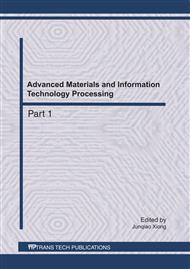p.1524
p.1528
p.1532
p.1538
p.1542
p.1548
p.1553
p.1557
p.1563
On the ADDIE-Based Effective Instructional Design for Higher Education Classrooms
Abstract:
ADDIE instructional design is a systematic approach for course development and instructional activities. It consists of analyzing the current state and needs of the learner, defining the end goal and expected outcomes of instruction, determining the instructional methods and approach, selecting the instructional means, synthesizing instructional plan, organizing and implementing instructional activities, and monitoring and evaluating instructional effectiveness. It gives a detailed illustration of the process of effectively designing and creating instructional activities for higher education classrooms and provides higher education lecturers with a well-defined structured procedures for instructional design.
Info:
Periodical:
Pages:
1542-1547
Citation:
Online since:
July 2011
Authors:
Keywords:
Price:
Сopyright:
© 2011 Trans Tech Publications Ltd. All Rights Reserved
Share:
Citation:


